Soviet fighters in the USAF, Aggressors (part of 3)
The United States received several MiG-19 aircrafts, including one from Taiwan and three (MIG-19C) from Egypt. Aircraft, as far as we know, passed the evaluation tests. There are very few materials on this program.
"Red Eagles"
In the summer of 1972, at the Nellis air base, the 57th fighter combat wing was formed. aviation (57th Fighter Weapons Wing) - widely known "aggressors". The origins of the formation of the "aggressors" were pilots who were directly related to the MiG tests in the USA and to the Red Baron program, which carefully analyzed all the air battles in the sky of Vietnam: majors Lloyd Busby, Richard Sater, Randy O'Neill and Captain Roger Wills. Buzby was among the first to begin an analysis of aerial combat under the Red Baron program; O'Neill and Wills flew on Israeli MiGs.
Wils and Sater have been breaking through the Pentagon’s “aggressor” concept for almost a decade. Both considered it impossible to teach the pilot "Phantom" to fight the MiGs "in a real way", practicing fights with the same "Phantoms", the tactics of which were very different from the tactics of the Soviet fighters. Enthusiastic officers succeeded in convincing high officials in 1972 during the visit of the head of the US Air Force Tactical Aviation Command General William Momier to the Nellis air base.
The most difficult task was the choice of aircraft for the "aggressors". Initially, the pilots who were initiated into the “black” programs of the Air Force were in favor of MiGs, but they had to stop at the T-38. The “Fathers” of 57th FWW, however, did not leave the idea of MiGs. Moreover, the most trained pilots of the 57 airflight were involved in MiG flights. Their colleagues were unaware of the work done by the “elect”, who disappeared from Nellis base from time to time.
The selection of pilots for flights on MiGs was carried out personally by Sater, O'Neill and Wilz. Candidates were invited to take part in interesting work, to disclose any information about which was strictly prohibited. The nature of the work was not reported, however, there were no cases of refusal. Preference was given to pilots with the experience of Vietnam.
Flights on MiGs were still performed at Groom Lake. At first, only on one MiG-17F (“Hev Ferry” plane), since two other MiGs (MiG-17F and MiG-21 F-13) were returned to Israel. Formally, the aircraft belonged to the 6512 th test squadron from Edward Air Base. The personnel of the “MiG unit” consisted of one test pilot (Major Normann Site) and six technicians. In the 1 972 in the Groom Lake from Israel for the second time arrived "James Bond" - MiG-21 with the tail number "007". On it began to fly test pilot Major Charles Winterz.
In 1972-1973 the MiG fleet was replenished with one MiG-17PF, two MiG-21F and two MiG-17F. "Unnecessary" MiGs were found in Indonesia. In 1970, in Indonesia, with the help of the US CIA, a new government came to power, curtailing friendly relations with the USSR. Logically, due to the lack of technical support, the 30 MiG-17, ten MiG-19 and 20 MiG-21 had to stop flights of the Indonesian Air Force, which had to stop. Good uncle Sam offered to help Indonesia in restoring the combat capability of the air force in the form of reactive training T-33, F-5E / F fighters, OV-10 turboprop and UH-34D helicopters. In turn, the agreement on military assistance provided for the transfer by Indonesia of the United States to MiG fighters.
It must be said that all Indonesian MiGs were in unsuitable for flying conditions. An American engineer who selected airplanes to be sent to the United States recalled how they found one MiG-21 standing in the mud along the very canopy. The first four Indonesian MiG-21s were flown to Groom Lake in 1973. Of these four fighters, one was able to fly.
30 May 1973. All flights on MiGs were combined into another “black” program of the US Air Force - “Have Idea”. Special Unit Detachment I 51th Fighter Weapons Wing was formed in the 57 Zone. The 1 th squadron of the 57 th wing, commanded by Lieutenant Colonel Glenn Frick, was armed with four aircraft: two MiG-17 and two MiG-21F-13 (one 007 and one ex-Indonesian).
At first, pilots from among the selected “aggressors” flew single-handed air battles, and from 1975 they fought two-on-two battles. One of the tasks of such battles was to determine the differences between MiGs, T-28 and F-5 for better imitation of MiGs by “aggressors” in “white” programs like the Red Flags exercise.
The Navy recruited pilots from the VX-4 squadron stationed at Point Mugu to the Have Aidea program. The pilots of this squadron already participated in the test programs of the Israeli MiGs and had a reputation for more aggressive air fighters than their Air Force counterparts.
Even experienced airborne fighters, when they met MiG in the air, fell into a stupor. One of the first “aggressors” who got access to MiGs, captain Paco Geisler recalled: “When I first saw a number of MiGs, I stopped controlling the plane!” Psychology ... In a real battle, such a second confusion can cost lives. The first fight on the F-5 against the MiG-17 Geisler completely lost: “. Instead of going off at a speed on the vertical, I began to turn turns with him. He stuck to me like a chewing gum on the sole of a shoe. I could not shake it off. He squeezed all the juice out of me. I felt like a dork. Then many told me about similar sensations. ”
The command of the US Air Force did not reject the idea of using the MiGs as “aggressors”, but it was extremely difficult to implement it because of the exceptional secrecy of the very fact of the presence of usable Soviet fighter jets in America. The question of MiGs in the first half of 1970's. occasionally raised at meetings of the representatives of the Aviation Systems Command and the Tactical Aviation Command. Various plans for the use of MiGs were offered by Freak, Sater, O'Neill and Gail Peck. Peck embarked on the “dark side of the force” (the black US Air Force programs jokingly called the “dark world”) in the middle of 1975. Behind Peck, there were combat sorties on Phantom in Vietnam, based on Nellis. In the summer of 1975, Peck was transferred to the Pentagon. A close friend of Peck Charles Donnelly had by this time reached the rank of general and served as deputy chief of staff of the US Air Force. Peck and Donneli together hatched a plan for the reassignment of MiGs to tactical aviation commanders, for the command of aviation systems was traditionally responsible for the equipment, but not for tactics. Peck did the donkey Donnelly and he found Solomon's solution: "I will give you MiGs, but only if you find an airfield for them." Donnelly's decision was approved by the Commander of the US Air Force, General Vandenberg. The MiG program in Tactical Aviation Command began to take on the features of reality.
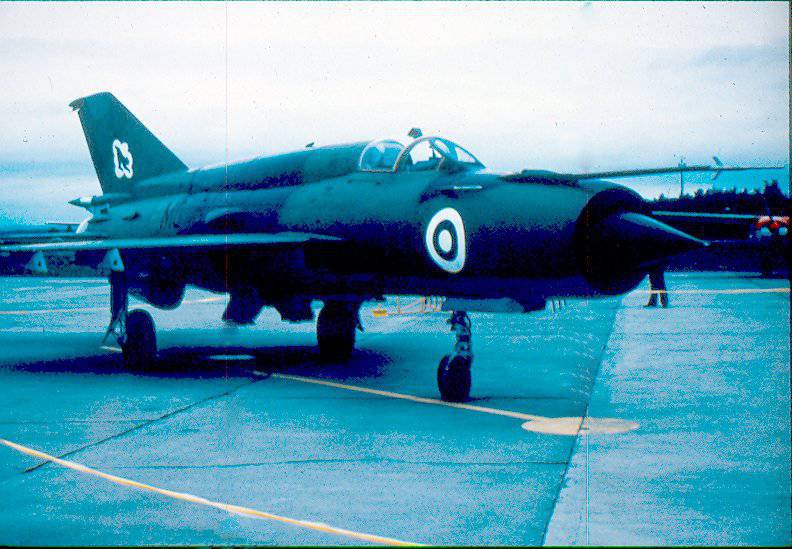
What is the program without a name, designed to mislead foreign shpienov? The name turned out to be unusual. Peck inquired about the call sign commander. "Constant," replied Vandenberg. Colonel Vandenberg's call sign combined with the name of his wife, turned "Constant Peg".
Behind the scenes of a beautiful legend, the battle of the Bulldogs is probably hidden under the carpet, which was conducted at the top of the Air Force. According to the “Constant Pig” program, the tactical aviation command received MiGs at its disposal, that is, it began the game on the field of the Command of Aviation Systems, which was traditionally responsible for “experiments” with foreign aircraft. Moreover, for the normal operation of the program, not only the aerodrome, but also additional MiGs were required.
The program was “motorized” by three people: Peck, Major David Smith from the headquarters of the Tactical Aviation Command (Smith provided the technical side for using the MiGs in the US Air Force) and Lieutenant-Colonel Frick. Three officers presented a plan for the formation of a squadron armed with fighters of the Soviet design.
The main problem remained the airfield, which would have managed to keep the MiG flights secret. And here the program "Constant Pig" intersected with another extremely secret program of the US Air Force - "Have Blue" (the one that led to the adoption of the F-117 aircraft). Colonel Robert Bond supervised the work of the “Air Force Blue” from the Air Force. Bond also needed an airfield in a deserted area, and by virtue of his position he had access to the Constant Pig program materials. Bond could not resist the mini-show: he invited Peck to his office (both worked in the Pentagon) and showed a fuzzy snapshot of the Heav Blue prototype: “This is the Sparrow radar image!” Then the officers seriously discussed both programs and concluded that the airfield for MiG is ideal for basing "stealth".
Peck was not particularly worried about the pilots - they already had no problems with recruiting new ones. Much worse things were with the engineering staff. It required not just professionals, but craftsmen who were able to assemble a plane from what was not clear without instructions and instructions. In Groom Lake, three Indonesian MiGs were to be restored to flight status. This job took 18 months. It was headed by the best in the US Air Force master MiGs master sergeant from the base Edward Robert Ellis. The following fact speaks about Ellis's qualifications: in 1976, he was among the very few who studied the hijacked Belenko to Japan MiG-XNUMHП.
The main problem was the engines, which initially had a small resource by American standards. The work had to connect the engineers of the company "General Electric". If you believe the Americans, they managed to raise the resource from 150 to 8000 h! Nonetheless, it was the R-13 TRDF that caused the Americans the most problems throughout the lifetime of the MiG-21 in the US Air Force. The engines were sent to the General Electric plant every 75-125 hours of service, repairing one engine took up to six months. The technicians did not get tired of the Soviet “engines” bonfire, unaware of their future - the maintenance of the P-29 from the MiG-23 fighter. P-13 in comparison with P-29 would seem to them a nut from the bolt.
Enormous work was done on reproducing the squib of ejection seats for the MiG-21. That was pretty rare in stories Aviation case when copying was performed "to zero": with the reproduction of the chemical composition of the charge and alloy of the squib body. Nevertheless, the pilots did not trust the MiGs' ejection seats. All the pilots flying the MiG-21 worked out the landing without an engine, because the engine and the seat were the biggest doubts, without which you could not get out of the plane in the air.
With the number of MiGs that were in the United States at that time, there is still no clarity. Two MiG-17F and two MiG-21F, as well as three non-flying ex-Indonesian 21-s were in Groom Lake. However, in Steve Davis's book Red Eagles. America's Secret Mig ”(the only publication on this topic at the beginning of 2012) provides information on“ several ”MiG-17 and MiG-21, which were located at Edward and Nellis bases. Answers to the questions "what kind of airplanes, how many and where are they from?" Have not yet been found.
Davis's book was the first edition, in which the history of the 4477 squadron was more or less consecrated. The list of publications devoted to the “Red Eagles” is very short - a couple of articles, in addition to the book by Davis. Information is also found on various sites, but the “unification” of this very information is 80-90%. Everyone rewrites the same thing!
1 April 1977 1 officially entered the staff of the 57 th wing as the 4477 Test Flight EED RAG EAGLES flight test link. From that day on, the command of the aviation systems was no longer in command of these MiGs, the fighters were completely under the authority of the Tactical Aviation Command. The flight commander remained Lieutenant Colonel Frick.
Peck learned about link formation from Frick:
- Two questions, Glenn (appeal to Frick). Where is 4477 located? Why a link?
- 4477 is in my ass. Link - so that no one guessed, the squadron attracts too much attention! And still - bad news: I became a whole colonel and now they send me to Egypt.
Colonel Frick was assigned to the US military attache in Egypt. Not for nothing - Egypt had an impressive number of serviceable MiG-21, but, most importantly, before breaking up the friendship with the USSR, he managed to get two dozen MiG-23. However, Colonel Frick, the commander of the 4477 link, remained even more than a year old: September 6 1978 was replaced by Peck.
At the disposal of the newly formed link they provided a building in the specially protected zone of the Nellis airbase, where the nuclear weapon. All flight managers continued to fly the F-5, just like normal aggressors. The link pilots received the same call sign “Bandit”: “1 Bandit” was with Captain Mayo, “2 Bandit” - with Major Iverson, “3 Bandit” - with Captain Mahler, “4 Bandit” - near Lieutenant Colonel Frick, “5 Bandit” - Captain Oberley and "The Bandit 6" - Major Huff. In total, 4477 “bandits” passed through the 69 link (squadron), that is, less than the SR-71 pilots, and the SR pilots were read almost more than the astronauts.
The first combat training missions of the 4477 link pilots were performed in the summer of 1977 during the Red Flag exercise in an environment of increased secrecy. In Nellis to participate in the "first ten days of the future war" then arrived armed with "Phantoms" 49-e tactical fighter wing, permanently stationed at the Holloman airbase. Captain Mayo spoke at the preflight training: “Congratulations, you will be the first to fight MiGs from 4477.” The pilots expected anything, but not the MiGs! The audience exploded.
Mayo managed to reassure the F-4 crews only in five minutes: “Each crew will perform a flight to test the basic maneuvers of an air combat with one-on-one MiG, then an air battle consisting of two by two, then another two Phantoms against one MiG and the conclusion is two “Phantoms” against one MiG-17 and one MiG-21 ”.
The 4477 pilots followed a similar scenario over the next several years.
In 1978, Mayo and Muller conducted air battles with the latest F-15. The first in the USAF at the end of 1977 on the F-15 was the 49 air wing re-equipped. In the same year, Mayo was appointed commander of the 65 Squadron, the “aggressors”. Mayo made the last flight to 4477 together with Mahler against two F-15: “Who won? We of course! "
Is it difficult to say now: Mayo played a trick or not? The results of the battles spoke about the complete superiority of the F-15 over the MiG-17 and the MiG-21, which is not surprising. However, the 4477 pilots found the F-15 vulnerability. If the F-15 did not "knock down" the MiG in the first attack, then the MiG could easily break away from the "Needle" and impose the last fight on favorable conditions: the MiG-17 in turns, and the MiG-21 due to the high overclocking characteristics, in which he was not inferior to the F-15.
The bandit who wished to remain anonymous on one of the sites described his fight on the MiG-21 against the F-15: “I remember several of my one-on-one battles with the MiG-21 over the Sedar Pass in the Kavich Mountains in April 1987, when I took a combat combat instructor course (FWIC, Fighter Weapon Instructor Course) on F-15. The Sedar Pass is located 20 miles east of the Tonopah base. It was above him that the “royal games” were held - air battles with Soviet fighters.
- In 1987, we flew only on “basic” air battles (Basic Fighter Maneuvers) with MiG-21. For the air combat instructors flying the F-15, this was the simplest job. You can shoot down the MiG with any F-15 weapon: cannon, AIM-9 or AIM-7. I liked the gun more.
- Even in defensive combat, the F-15 is preferable to the MiG-21. Eagle is superior to Fishbird in all respects. ... In two bends, the Eagle is able to enter a counter course and release Sparrow or Sidewind into the forward hemisphere of the MiG. Using the vertical maneuver on F-15, it is enough just to put the enemy in the defensive position. The MiG pilot has a chance to shoot down the F-15 with cannon fire only if the Igla pilot makes a mistake.
- The average level of tactical aviation pilots participating in battles with MiGs according to the “Constant Pig” program is not high. Most of the pilots become true professionals only after four years of service in combat units. In the battles with MiGs, very often guys who had served for only two years took part. This is very important for understanding the statistics of combat results. MiG pilots from Constant Pig flew to air combat for at least seven years. All of them were instructors. They were "Jedi", and their opponents from the combatant units - "apprentices." In my opinion, a pilot who has flown to the F-15 for at least two years is capable of migrating from the Constant Pig MiG.
- If you take me, the first time I tasted the MiG, having 2,5-year experience of flying the F-15. I was the commander of a group of young pilots who flew the “needle” for a year and a half maximum. We conducted several fights with MiGs one-on-one in the area of the Tonopah base. The first fight didn’t win any of us - we just did not have time to understand what happened. In all radio talks, for reasons of secrecy, instead of MiG-21 or “Fishberd” we said F-5.
- In aerial combat, the MiG-21 looks much better than the F-5. F-15 when operating the engine only at maximum, without switching on the afterburner, can be considered an excellent MiG-21 simulator, but the dimensions of the “Needle” are much larger than those of the MiG. ”
The program "Constant Pig" was a joint, in addition to the Air Force participated in it, albeit to a much lesser extent, and the Navy. Tom Morgenfeld from the VX-4 squadron, who by that time was hardly the largest in the USA on the MiG-21, became the first naval “bandit”. Morgenfeld had a relationship with the "dark side of the Force" for a long time. It was Morgenfeld who wrote the RLE on the MiG-21 F-13 for American pilots. Together with Morgenfeld (“7 Bandit”), Navy Lieutenant Chuck Hitley (“4477 Bandit”) was appointed to 8. "9 Bandit" was Major Peck.
And what about the airfield? Peck, Sater, Bond were looking for a place of deployment for the MiGs. Gold Water sites to the south of Lake Arizona base, Dugway southwest of Salt Lake City in Utah and Tonopah, which are 70 miles southeast of Groom Lake, hit the shortlist. To fly over landfills rented civil Cessna 207. Frick, Oberley, Holden, and Peck performed an inspection of the sites for the future base. All three landfills were strictly protected objects and had small airfields. Found the most suitable polygon Tonopah. This landfill was used by the US Department of Energy to work out the forms of the head parts of ballistic missiles and explosive devices of nuclear ammunition. The location of the Tonopah landfill attracted the most: not far from Groom Lake and Nellis, in a sparsely populated area. The nearest town of Tonopah was located in 50 km from the airfield. Frick and Peck found the city of Tonopah "a sleeping place, a dusty museum." The runway of the airfield allowed the taking of airplanes not larger than twin-engined piston. Of course, the airfield demanded total restructuring. In Washington, Peck reported: "We have found a place - Tonopah."
The design of the new airfield on the site of the old began immediately. Peck proposed to expand the runway at both ends, to build on the ends of the strip a platform for MiGs to turn, to build three hangars (one for fighters, one for TEC and one for long-term storage), an open parking for aircraft, a fuel depot. The plan for the future base, Peck sketched personally.
The concept of the "Constant Pig" program was approved by the US Department of Defense on 30 in January on 1978. At the same time, the issue of funding was resolved: 70% from the Air Force budget and 30% from the Navy budget. The Air Force financed the construction of a new, “black”, base from the “white” budget as “unforeseen construction expenses” without asking for permission from the US Congress. In May, 1978 was allocated 1 million dollars to the 7 phase of construction of the base. Peck by this time requested another 10 million. The story of the financing of construction is probably no less exciting than, in fact, the story of MiGs. Financing of construction can be called a “scam in the interests of the state”! One translation of a “white” financial flow into a “shadow” is worth something. But that's not all! According to the law from 1932, the transfer of funds from one government organization to another was prohibited. Polygon Tonopah belonged to the Department of Energy, and the money - the US Air Force. Get out, however, completely legitimate - through dummy private firms.
The 1 th stage of base reconstruction was completed in the summer of 1979. Several non-flying MiG-17 and MiG-21 were transported to the new hangars. Until July, 1979 was a link stationed at Groom Lake Base. 16 July 1979. In Tonopah, six MiG-21 and two MiG-17 flew from Groom Lake. The next day, Peck performed the first flight on the MiG-21 at Tonopah airbase. Wrapped on that momentous day for 4477 was flying the MiG-17. By the end of 1979, almost 100% of MiG flights were performed on the Red Flag. In September, 1979 finally formed the “scenario” of using MiGs in exercises. In the first flight, the MiG and the US Air Force combat squadron fighter worked, conscientious maneuvering was performed, in which the combat pilot first of all “got used” to the MiG, and he demonstrated differences in flight data and aircraft controllability. The pilot was required to maintain during the relatively simple maneuvering the position of the slave couple in battle formation. Already in this flight the Phantom pilots understood that fighting on turns with the MiG-17 is a priori losing option!
In the second flight, one-on-one air combat was practiced. The fight usually began with an attack from the “guests” from behind. In most cases, the “Red Eagles” withdrew from the strike: “We showed how difficult it is to knock down a MiG even in an attack for six hours.” The MiG-17 usually went away from the attacking fighter in a maximum turn with an overload of 5g. The Phantom slid forward, exposing its tail. The third flight - a fight two by two. The battle began with the rapprochement of the "opponents" and the flight in one line, wing to wing. Then the pair dispersed. “Guests” in practice determined at what distance the radars of their fighters are able to detect and capture MiGs. In turn, the “eagles” informed the “guests” from what distance the MiG equipment began to record the work of the radar of American fighters.
In the course of the Red Flag exercise, the pilots of the 4477 link carried out an average of two sorties on MiGs. After each they flew to Nellis for debriefing. The load on the pilots was very high, but the number of “bandits” gradually increased. It became possible to make "cruises" Nellis - Tonopa - Nellis in a day, that is, after the analysis, the pilots in Tonopah did not return to this, but the next day. Not all the combat crews involved in the Red Flag flew to the battles with MiGs. Usually from a squadron, and sometimes from a wing, only six crews were assigned. In theory, all three flights of the Constant Pig were performed on the same day. Two crews flew, the next day they were replaced by two others. In practice, the program took two to three days, which was caused by quite frequent failures of MiGs, as well as shock by pilots who first met in the sky a wing to the wing of an airplane with red stars. Many brave guys needed at least a day to recover from “joint maneuvering”.
Flights on MiGs were carried out taking into account the overflight of the 51 Zone and the Tonopa test site of the Soviet reconnaissance satellites - the fighters should not have gotten into the lenses of spacecraft. A high-ranking visitor, astronaut Thomas Stafford, visited 1979. In our country, smiling Stafford was remembered under the Soyuz-Apollo program as a great friend of the USSR as a whole and Alexey Leonov personally. In 1979, General Stafford of the United States Air Force led the F-117 program. He inspected the base of Tonopah for its suitability for placing serial "invisible". It is possible that the astronaut-cosmonaut-general flew to joint maneuvering with MiGs. In any case, Stafford has accelerated the process of allocating funds to the 2 stage of the reconstruction of the Tonopah airbase, in particular, to replace the asphalt pavement with concrete. Shortly after Stafford’s visit, the 4477 link suffered its first loss. 23 August 1979. In the air battle with the F-5 aggressors of the US Navy went to the MiG-17 Hag Brown (12 Bandit). On the bend of Brown, he pulled the handle, after which the MiG broke into a tailspin. Brown was able to bring the fighter out of rotation, but then he fell into a corkscrew with the opposite direction of rotation. The pilot did not attempt to leave the plane. MiG ("Hev Farry") fell near the airfield.
Prior to 4477, Lieutenant Commender Brown served in the US Navy VX-4 squadron. Brown crashed in his ninth flight on the MiG-17 as part of the 4477, however, he flew on the 17-m earlier - in the VX-4. Analysis of the disaster took place at the highest level. Peck was removed from the command of the 4477 th link. The new 6 commander in September 1979 was Major Henderson (13 Bandit). Under pressure from above, the new commander unfolded the process of "formalizing" the procedures for preparing the equipment for flight and the flights themselves. Earlier, the US Air Force command turned a blind eye to the inconsistency of the procedures for preparing for flights at Tonop Air Base to the established instructions. The number of “familiarization” flights on MiGs for new pilots of the 4477 link has been increased from five to at least ten. True, MiG flights were temporarily suspended. To maintain the training of the pilots from the 490 th wing, two T-38 Sparks passed. Previously, such flights were carried out occasionally on the Talons, which belonged to the “aggressors”. The “red” T-38 did not receive special markings, because they changed every nine months - it was supposed to carry out the regulations in nine months. The "old" T-38 overtook the Nellis base, and in return, they took the inspected and serviced aircraft. On October 31, the new commander 4477 presented to the headquarters of the Tactical Aviation Command a manual for MiGs “Constant Pig” and an analogue of the combat use course, compiled (more or less) according to the forms adopted by the USAF. KBP categorically disliked the commander of TAK, General Crich, as Henderson continued Peck's line: to teach combat pilots to fight MiGs. Crich, on the other hand, wanted to minimize the possible probability of another catastrophe, for which he suggested limiting himself to the performance of familiarization flights in the ranks, even without maneuvering.
Meanwhile, the flights of the “aggressors” on the F-5 became much more complicated after adopting the F-15 and F-14 fighters. The favorite motto of the “aggressors” was the expression: “Be humble, you cool fucker”. The phrase can be translated as "urine of all, you are a scumbag." Crick really didn’t want to see fakeers from 4477. Henderson was able to prove to Scream that errors in the method of training the pilots, and not in the methods of using the MiGs, were the cause of Brown’s catastrophe. At that time, American pilots (as well as Soviet ones, by the way) practically did not teach withdrawing an aircraft from a spin. Only after that all the pilots of the 4477-th began to be trained on the basis of the Navy for input and output of the aircraft from the corkscrew. Brown's probable cause of death could be an unusually high control stick for Americans. In the absence of power boosters on the MiG, at large overloads the pilot had to exert very great efforts on the handle. According to the laws of physics, pull-push a long handle is easier than a short one. Brown, after an unexpected hit in a corkscrew, could easily forget about this feature of the MiG and “pull” the handle towards himself, after which he fell into a corkscrew on a new one.
In exchange for the crashed “Have Ferry” 4477, another MiG-17F received a link.
For an incomplete 1979, the 4477 pilots performed 87 flights on eight MiGs, including 67 for joint maneuvering and air combat with pilots of combat units of the Air Force and Navy of the USA, as well as with the “aggressors”.
The pilots "Constant Pig" evaluated the MiG-17F very controversial. Henderson noted the ease of piloting a fighter in most modes, but still considered him an "old tractor." Regarding the ease of piloting the MiG-17, Oberley said well: “it is made in such a way that an orangutan is also able to fly it”. All pilots noted a poor engine response VK-1F in the range from low gas to maximum. Most of the flight pilots preferred to perform on 80% thrust, releasing flaps to reduce speed, increasing overload, but not touching the throttle. Due to the increased fuel consumption in this mode, the flight time had to be limited to 15-20 min. In the first flights, the Americans complained about the poor view from the cockpit, especially back.
Fighters 4477 Squadron, Tonopah, end of 1980-ies. From left to right: ex-Indonesian MiG-21F-13 in camouflage coloring of spots of black, gray and green colors; unpainted Shenjang J-7B and another J-7B camouflaged in stripes of brown and sand flowers
Most of their opinions changed - a bad review back was fully compensated by a very convenient rear-view periscope.
Henderson had not long commanded 4477 — in March 1980, the commander at the age of only 39 had suffered a stroke. Doctors "closed" the sky to him, however, according to the tradition adopted by the USAF, the commander performed a farewell flight. American fighter Henderson chose the MiG-17.
In April, former US Navy test pilot Silvin Later (Bandit 4477) became the 18 link commander in charge. In May, the unit was reorganized into the 4477 th flight test squadron (4477th Test and Evaluation Squadron "Red Eagles") and in June the new commander, Lieutenant Colonel Tom Gibbs, accepted the squadron. The squadron included three links: "A", "B" and "C". Over time, the entire link "C" was staffed by pilots of the Navy and Marine Corps.
Gibbs set to work super energy. First of all, the lieutenant colonel set the task for the technicians to achieve the regularity of MiG flights: “If necessary, you should install the nose wheel from T-21 or the hydraulic pump from F-38 on the MiG-100”. According to Gibbs, it was necessary to tighten up the discipline: “In ordinary life, I am Tom, but on the basis for all — only the Boss! I want strict observance of all subordination. " Romance (and anarchy) of the first years of the existence of the 4477 link is in the past. Strengthening discipline has become a tradition for the newly appointed commanders of the 4477 squadron.
The pilots were taken to Tonopah daily from the Nellis base, but the technical staff was in Tonopah five days a week. For reasons of secrecy, engineers and technicians were allowed to wear civilian clothes and let go of their hair - perhaps they would pass for local civilians!
Lush headgear allowed to wear and pilots: the end of 1970-x - the beginning of 1980-x. - rock and roll, sex, drugs, heer to the shoulders. The pilots did not shy away from fashion, but somehow it was impossible to be friends with drugs. The rest is like all young guys.
About the enthusiast "Constant Pig" Moody Satera stories in American aviation went a lot. Suter “punched” as much as possible the participation of the real MiGs in the Red Flags exercise. At the forum of Y2B Publishing, one of the participants in those events brought a story that was not without color: “Moody was to meet with a four-star general from the tactical aviation command of the Air Force about Red Flag.” Suter had the usual appearance for himself: he constantly smoked, covered his ashes with a tie and shirt, his eyes from the evening portion of his temples were filled with blood. He told how we will fly to Nellis. 14 day for two flights daily, as in war. Let's burn the monthly norm of kerosene, but - like in war!
“After Moody’s fiery speech, the general asked him only one question:“ If in two weeks your guys will make a monthly rate on the fly, what will they do in the remaining two weeks? ”
- Moody once again shook the ashes off his cigarette and said: “Damn, general! I did not think, but perhaps they will find time to get a haircut? ”The General paused:“ Good idea, Moody. Get ready for Red Flags.
Here is another story: “When I remember that flight, I was trembling even 35 years later. And I flew not on the MiG-23, but on the MiG-21. I was in the juice at the time: experience in “aggressors” and on 10 MiGs for years, more than 3000 flights and almost 10000 air battles. On average we fought three battles on each flight. It was at the very beginning of the program. I fought alone with a pair of F-4 not from the center of combat use, not from the 422-th test squadron. Exactly, it happened before the transfer to Tonopah, in the “nameless zone”. "Phantoms" then practiced a new tactic of fighting with the MiG-21. Restrictions on the course of combat use did not apply to us, the “law of war” was in effect: there were no restrictions on height and the balance of fuel. If you see the land too close - take it out, but so as not to "substitute" for the attack. Fuel left the bare minimum, just to reach the base.
- Not only the second, not the third for the flight of the battle, I almost produced fuel, but I was shot down by one F-4. I was attacked by the second F-4. I managed to tighten it into a rolling scissor maneuver (something like a tub), which we completed at about the height of the underlying soil. To save fuel, I piloted the engine in combat mode. At the “Kadushka” we both lost a lot of speed, approximately to 150 nodes (277 km / h). No more than 100 feet (30 m) remained to the ground. I had two options: try to break away to go to the base or turn on the afterburner and use my last chance to attack, get the enemy out of the fight - his fuel was also running out.
- I chose the latter. Having shifted the throttle valve to the afterburner with a sinking heart, he looked at the light bulb signaling its activation. This moment I dream at night. And today I think: what if it did not ignite? If surging? In reality, there was no choice anymore: to stick into the desert "without speed and without ideas."
- Fortunately, she lit up! Behind the tail of the fighter a huge tongue of flame appeared. Lifting my nose at 20 degrees, dramatically increasing the plane's drag, I found myself behind the wing of the F-4. F-4 had no choice but to retire: by reducing the overload, he went home. I did not pursue him, but at the same time I transferred the ORE to the “small gas” position. Fuel barely enough to reach the base.
- The MiG-21 engine in that flight was as reliable as rock. He saved my life, and the Air Force - the program. "
Let us return, however, to Gibbs. His efforts gave the result: in 1980, the pilots of the 4477 squadron performed 1015 flights on MiGs and “acquainted” the Air Force and Navy pilots with the 372 Soviet fighters. At the same time the first flights were made on the MiG-23.
In 1981, 1340 flights were made; 462 combat pilots were “prepared” for combat with MiGs.
Operation of the MiG-17F stopped in 1982, after two flight accidents. When flying around the MiG-17F after repairing 23 on January, the electric generator failed to fly during the flight, and even the emergency main landing gear could not be released during the landing approach. However, landing ended safely. The damage to the fighter was limited to a wrinkled right wing plane and a broken flap. Technicians repaired the MiG in a few days. The second case had more serious consequences. On takeoff, 8 April, the engine compressor collapsed at the MiG, after which a fire broke out. The pilot immediately landed the plane, but “attached himself” to the runway on the fuselage. As a result, the 37-mm gun "went" back, breaking through the fuel tank. The pilot managed to leave the plane before it turned into a fireball. The decision of the US Air Force Command to stop the MiG-17F flights was not understood by the 4477 pilots. They considered flights on the MiG-23 to be much more dangerous, and by that time they had almost no problems with spare parts for the MiG-17F. However, there was a reason for the termination of the MiG-17 flights: this fighter was outdated by 1982.
In terms of flight safety, Americans considered the MiG-21 to be the best. Oberli said the following about 21: “MiG-21 is a super airplane. Looks great and flies great. Even when 7 is overloaded, you feel comfortable. Landing on it is not much different from landing on the F-5, which simplifies retraining. It is faster than the MiG-17F, and the view from the cockpit is just as good. "
All Americans who flew 21-x, noted the high angular velocity of the roll and excellent horizontal maneuverability, in which not a single US fighter, including F-16, could match the MiG until the F-5 appeared. The pilots performed turns at speeds of the order of 160 km / h, while there were never any cases of engine lowering and stalling. On the other hand, the Americans considered piloting the F-5E more comfortable due to the shorter handle length, but this is more likely a matter of habit.
According to the 4477 pilots, a good pilot on the MiG-21 will always "make" the F-4. When attacking the Phantom, the MiG pilot usually transferred his fighter to climb and laid a right turn with a large overload, after which he found himself on the tail of the F-4. In the battles with F-5E from “Aggressors”, the score was approximately equal, with a small margin in favor of F-5E, but here it should be noted that no matter what masters the 4477 pilots were, they were not as flying pilot b / c (without class) Air Force USSR.
Robert Sheffield (“16 bandit”) generally believed that on bends with the MiG-21 only the F-16 was able to carry out due to the greater available overload in 9g (in the MiG-21, according to the Americans, 7,33g).
As it turned out, in the battle with the F-15, the MiG-21 had certain chances to win. The battle of two MiG-21 against a pair of F-15 went something like this: “We knew the tactics of F-15. We knew that they were capturing 15 miles. Usually we were going in a very tight order and at the moment when F-15 should capture the target, abruptly carried out a divergence maneuver in different directions, disrupting the seizure. ”
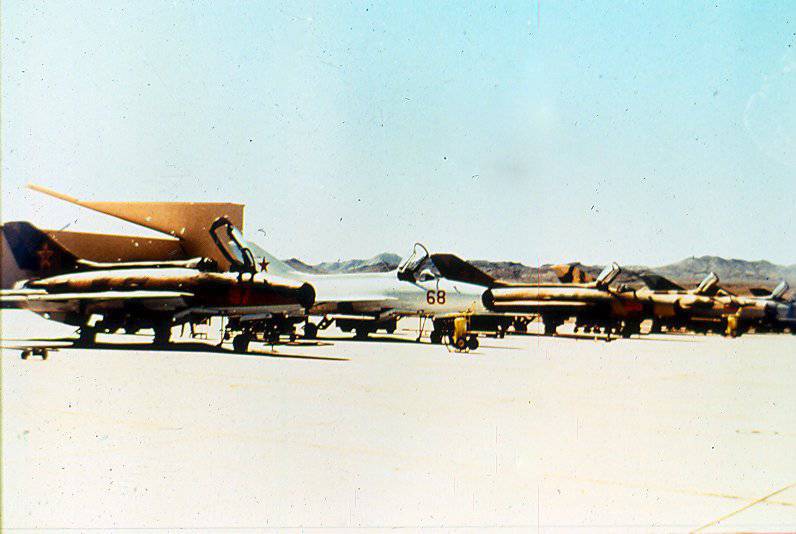
Quite rigid restrictions on height and speed were imposed on couple fights on couple. One-on-one battles took place in the speed range from 0 to 1500 km / h and heights from a few meters to 15000. In such research, and not indicative of combat pilots, the “Red Eagles” battles often prevailed over F-15 due to sharp braking on a turn, after which the attacking Eagle, unable to repeat such a maneuver, jumped forward, putting the tail under the MiG missiles and cannons: “At speeds of the order of 900 km / h in less than half the turn, I lost 180 km / h - not a single fighter in the world, except the MiG-21, is not able to do this. "
Oddly enough, the advantage of 21 in the maneuverable battle with the F-15 was the absence of a powerful radar. Primitive by Western standards, the MiG sight weighed several times less than the F-15 radar, so the MiG is much more willing than the “Needle” to snatch its nose: “I turn on the afterburner, release the flaps and put the plane on the tail.” The speed drops to 170 km / h. Then I put my nose down and go to the sun. Virage, and I go to the tail of the enemy. We told the F-15 pilots about this maneuver in pre-flight preparation. They never believed in the possibility of its implementation. In vain did not believe.
On the F-14 with the MiG-21 in a maneuverable battle only very experienced pilots could fly. Tomkat's Achilles' heel throughout his career remained low thrust-to-weight ratio, and he did not have the advantage over the MiG, even with a variable sweep wing. Huge in comparison with 21-m “Tomkat” was easily detected visually, while seeing the small camouflage “hawk” against the background of the desert was still a task. James Robb, after serving in 4477, received the VF-51 squadron armed with "Tomcats". In his opinion, the MiG-21 should have been beaten with rockets and in no case should get involved in a maneuverable battle.
In 1982, the 4477 squadron fleet was supplemented by two ex-Egyptian MiG-21 MFs. In July, 1983 appeared in the media about negotiations with the Chinese government on the purchase of J-7 (MiG-21) fighter aircraft directly at the factory. On behalf of the United States, negotiations were conducted by representatives of the LTV company. Officially, the aircraft were intended for the "aggressors" of the US Navy. The Americans bought 12 F-7B, bought through a CIA front company, which was called “Combat Core Certification Professionals Company”, or “USSR” for short. Let's pay tribute to a specific sense of humor: the USSR, and not anyone, bought the MiG-21 in China! The 4477 Squadron was armed with at least four J-1987 in 7. In the summer of 1987, all the ex-Indonesian MiG-21F-13 were decommissioned, to the dismay of the pilots. The "Red Eagles" preferred the "F-13" for the best maneuverability in the horizontal plane.
One of the reasons that prompted to replace the "F-13" on the F-7B, were the problems with emerald seats that got the edge of the teeth. Doubtful honor to try out the Chinese chair in the work fell 25 June 1987 g. Rikkar-do Kazessasu ("thug 63", 174 flight on MiG-21). In flight, the engine stopped at J-7B with the serial number "045". The pilot tried to land with the engine stopped, but he miscalculated the approach. I had to eject, the chair worked properly. The reason for stopping the engine in flight could not be reliably established. Presumably, during prolonged negative overload the fuel supply stopped. A month later, on August 23, Herbert Kerlisli successfully “exited” from the MiG-23BN (54 thug, 146 flights on the MiG-21, 170 flights on the MiG-23). The pilot lost control when performing oblique eight.
The loss of two aircraft caused serious disassembly at the level of the headquarters of the Tactical Aviation Command. “Kerosene in the fire” added the A-7 crash from the F-117 armed “brotherly” 4450 tactical group. Not only two stealth pilots died in the crash, but also US civilians - Sparca collapsed on the small town of Ramanda Inn. A high commission arrived in Tonopu, the results of which had a further negative effect on the fate of the 4477 squadron.
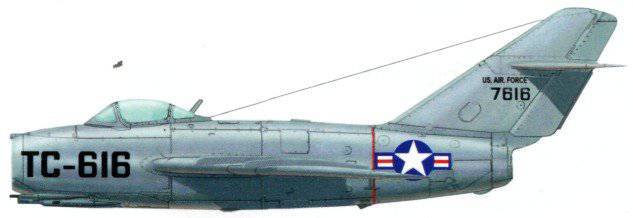

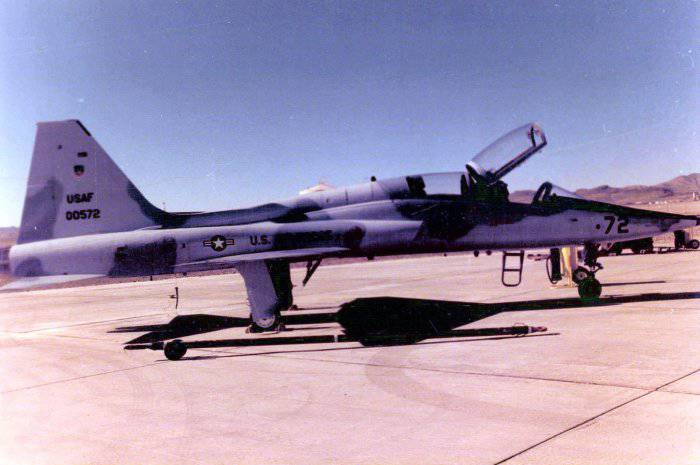
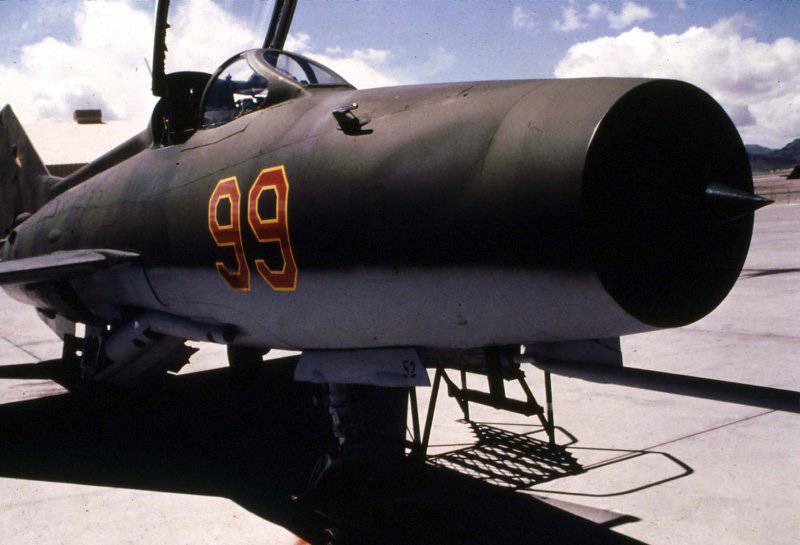
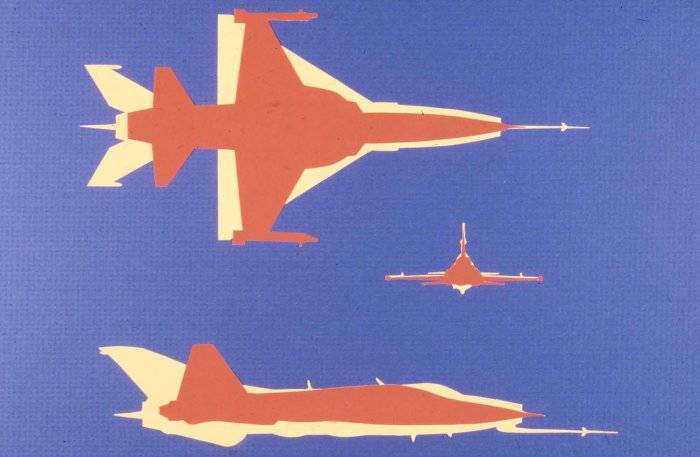
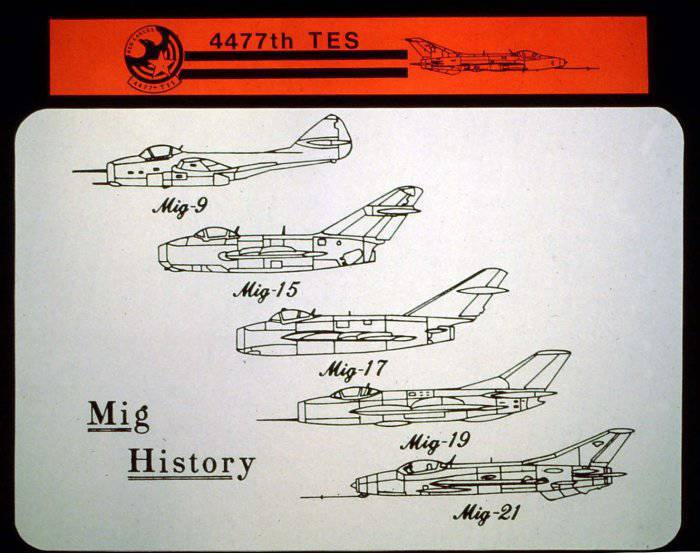
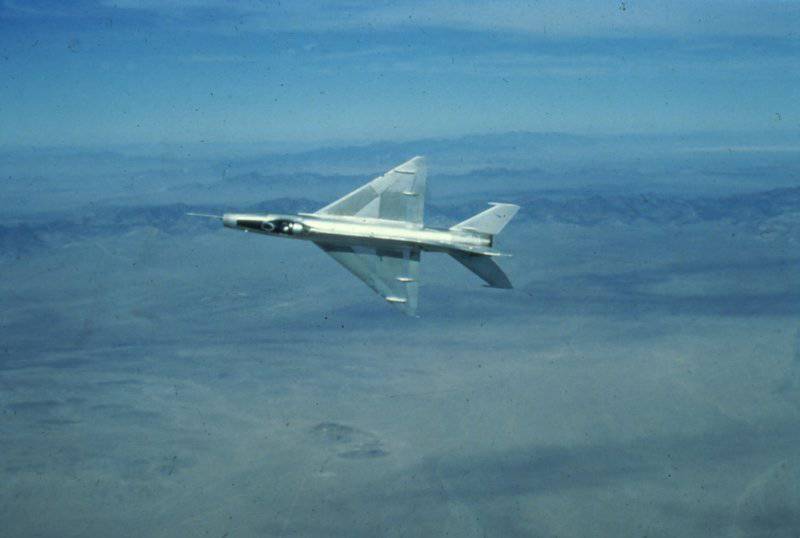
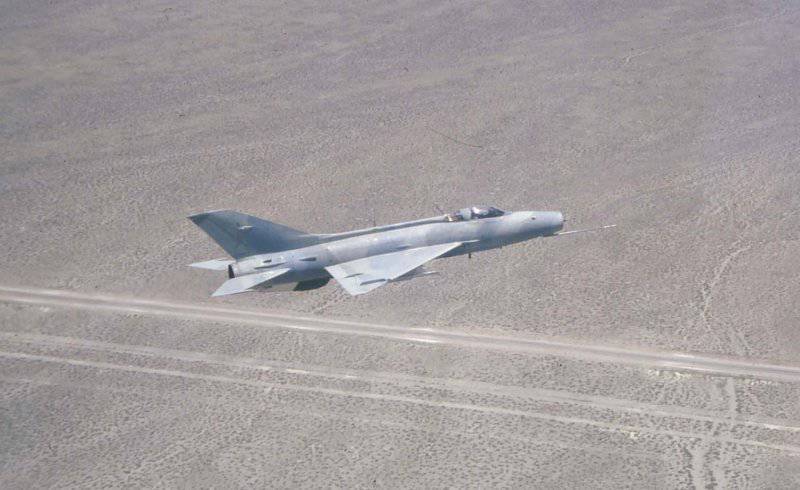
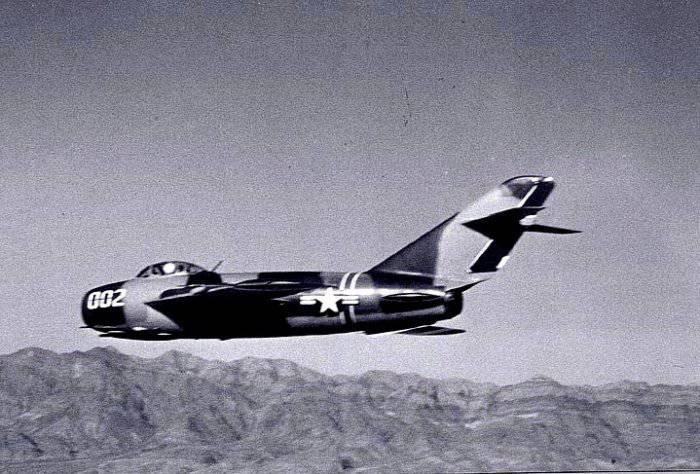
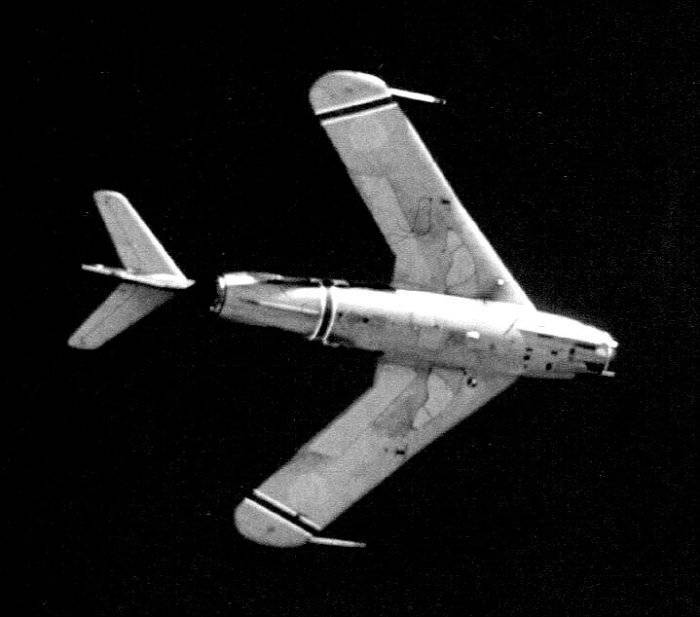
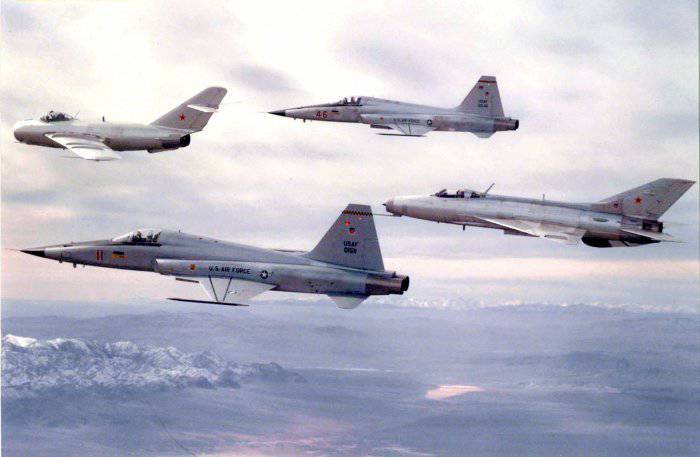
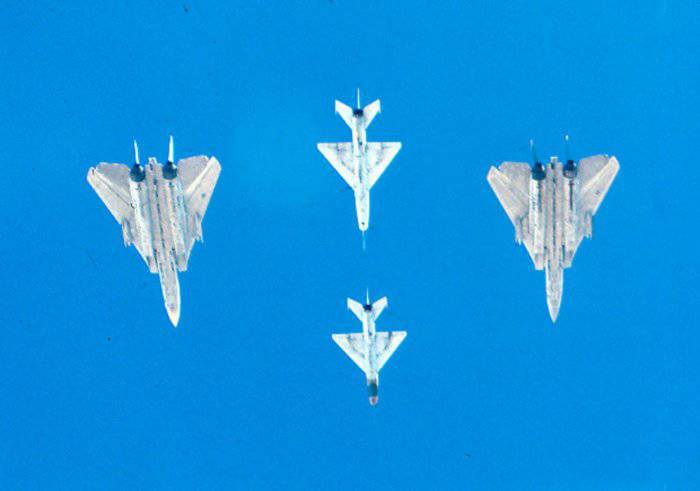
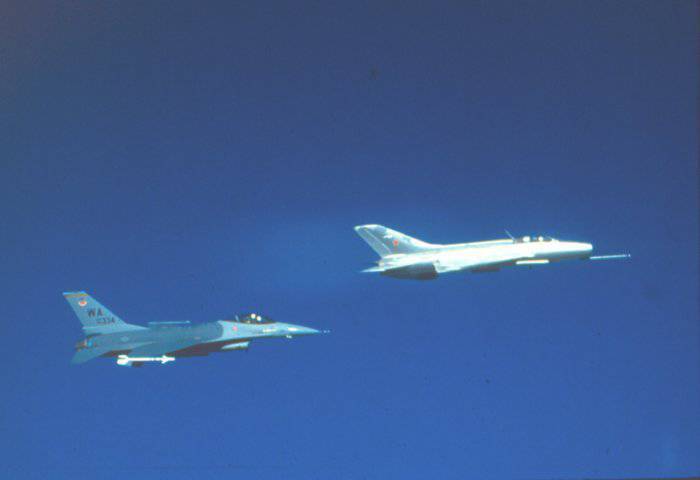
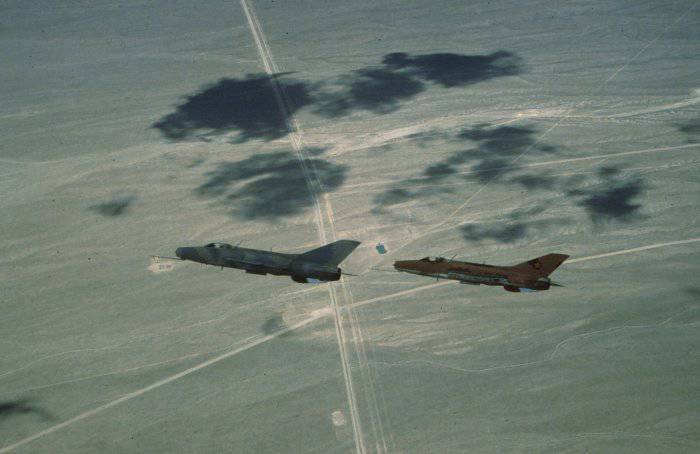
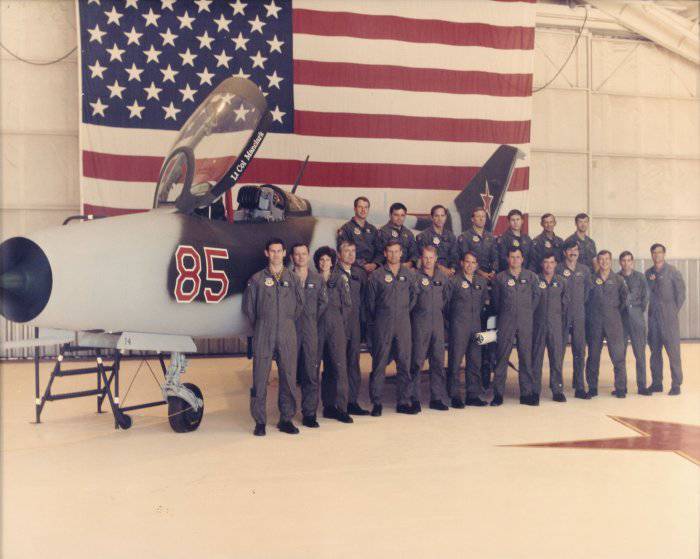
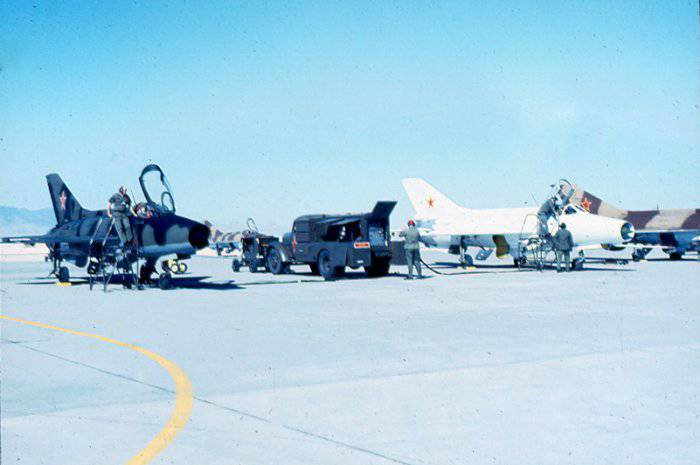
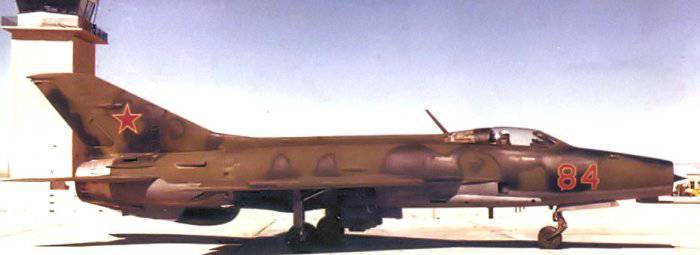
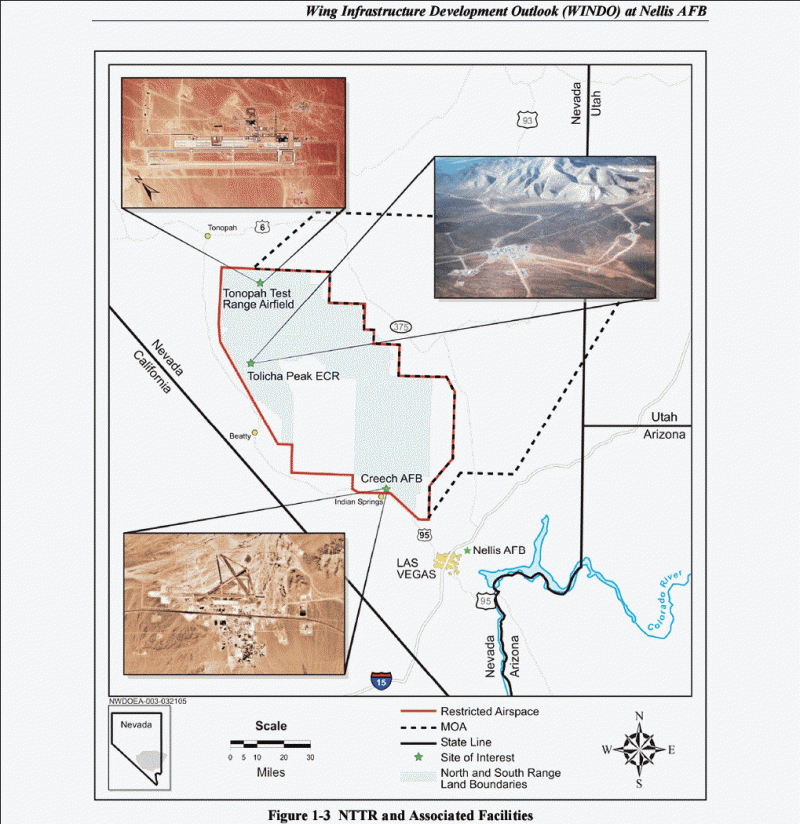



Information